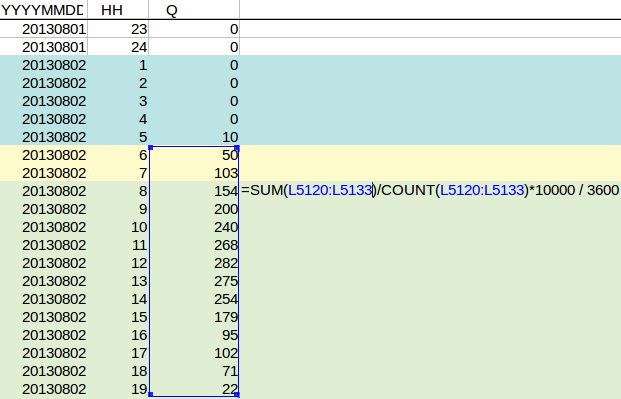How to calculate the daily average radiation: Difference between revisions
Jump to navigation
Jump to search
No edit summary |
|||
| Line 1: | Line 1: | ||
The [[Daily_avg_radiation_(Heat_Overlay)|daily average radiation]] is measured for the hours the sun is up. It is up for discussion to take into account the first and last hours, because these hours often don't contribute fully to the average. | The [[Daily_avg_radiation_(Heat_Overlay)|daily average radiation]] is measured for the hours the sun is up. It is up for discussion to take into account the first and last hours, because these hours often don't contribute fully to the average. | ||
Similar to the hourly radiation, the radiation values have to be multiplied: | Similar to the hourly radiation, the radiation values have to be multiplied: | ||
| Line 12: | Line 11: | ||
|notes= | |notes= | ||
|seealso= | |seealso= | ||
* [[Daily avg radiation (Heat Overlay)]] | |||
* [[KNMI weather data]] | * [[KNMI weather data]] | ||
}} | }} | ||
{{Heat Module buttons}} | {{Heat Module buttons}} | ||
Revision as of 15:08, 16 February 2023
The daily average radiation is measured for the hours the sun is up. It is up for discussion to take into account the first and last hours, because these hours often don't contribute fully to the average. Similar to the hourly radiation, the radiation values have to be multiplied:
,
where n is the first full hour with sun radiation and m is the last full hour with sun radiation.





